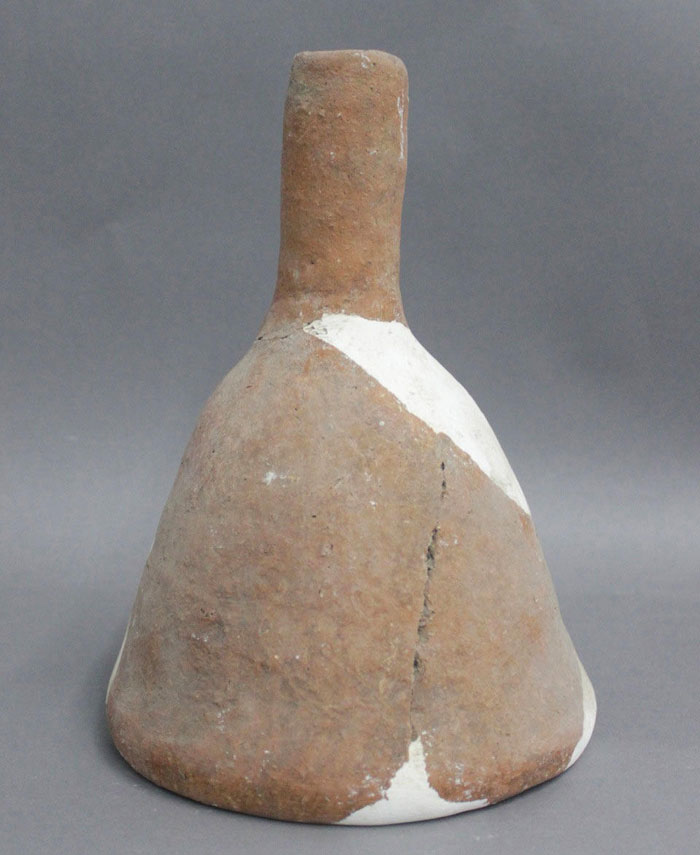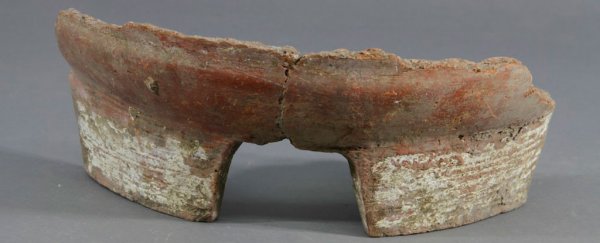Archaeologists have discovered the remnants of the oldest known beer brewery in China, unearthing an array of ancient pottery vessels including funnels, pots, and jugs containing residual traces of the beverage from about 5,000 years ago.
Uncovered at an archaeological site at Mijiaya in northern China, the beer vessels were found in pits dating back to between 3400 and 2900 BC. A faint chemical residue inside the pottery is what gave away the kit's original purpose, with the researchers finding evidence of ancient grains used as ingredients in beer fermentation.
Analysing the residue, the team, led by Jiajing Wang from Stanford University, found what they call a "surprising beer recipe", including traces of broomcorn millet (Panicum miliaceum), barley (Hordeum vulgare), Job's tears (Coix lacryma-jobi), and tubers.
The detection of barley in particular is significant, providing the first known evidence of the grain sourced from archaeological materials in China.
"The discovery of barley is a surprise," Wang told AFP. "This beer recipe indicates a mix of Chinese and Western traditions – barley from the West; millet, Job's tears and tubers from China."
So what would this ancient brew taste like? Unfortunately, it's impossible to know for sure. While the researchers' analysis reveals what ingredients were used in the beer, they don't indicate the proportions of each grain. That said, the team is willing to speculate on the flavour in the interests of science.
"My guess is that the beer might have tasted a bit sour and a bit sweet," Wang told AFP. "Sour comes from fermented cereal grains, sweet from tubers."
 Funnel used for beer-making. Credit: Jiajing Wang/PNAS
Funnel used for beer-making. Credit: Jiajing Wang/PNAS
In addition to the chemical residue, the physical appearance of the pottery is another clue to the ancient brewery, suggesting the vessels were used for filtration and storage, and inspection revealed evidence of malting and mashing. The kit also includes a stove, which the researchers think would have been used to break down carbohydrates to sugar, but keeping the brewery kit underground – and thus cool – would have also been crucial.
"A cool spot is important in controlling heat, which if it gets too high can destroy the enzymes responsible for the carbohydrate to sugar conversion," biomolecular archaeologist Patrick McGovern from the University of Pennsylvania Museum of Archeology and Anthropology, who was not involved with the study, told AFP.
According to McGovern, the brewery processes unearthed at Mijiaya reveal a ritual that has changed little in the millennia since. "All indications are that ancient peoples, [including those at this Chinese dig site], applied the same principles and techniques as brewers do today," he told Madeline K. Sofia at NPR.
The researchers think the early evidence of barley suggests the grain may have entered China primarily for its use in making alcohol, before going on to find a home in other agriculture.
"Barley was one of the main ingredient[s] for beer brewing in other parts of the world, such as ancient Egypt," Wang told NPR. "It is possible that when barley was introduced from Western Eurasia into the Central Plain of China, it came with the knowledge that the crop was a good ingredient for beer brewing. So it was not only the introduction of a new crop, but also the movement of knowledge associated with the crop."
Aside from ferrying information on how to use the grain, the introduction of barley could also have had profound cultural consequences, with the hip ingredient playing a part in helping to define social hierarchies inside China.
"The introduction of Middle Eastern barley into a Chinese drink fits with the special role of fermented beverages in social interactions and as an exotic ingredient which would appeal to emerging elite individuals," McGovern told AFP.
McGovern offers a few recommendations for contemporary beers that might have been similar in flavour to this ancient Chinese brew, but who knows? Perhaps now that ingredients from the oldest-known Chinese beer have been discovered, somebody will try to brew it again.
It wouldn't be the first time this has happened. Six years ago, bottles of beer dating back to 1842 were discovered in a shipwreck, leading researchers to successfully recreate it after chemical analysis.
And earlier in the year, an ancient Peruvian beer from more than 1,000 years ago was recreated for modern sippers to enjoy. If those beverages are a little too contemporary for your tastes, why not try brewing your own 2,550-year-old Celtic beer? There's a world of flavours out there.
The findings are reported in Proceedings of the National Academy of Sciences.
